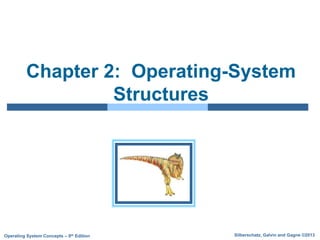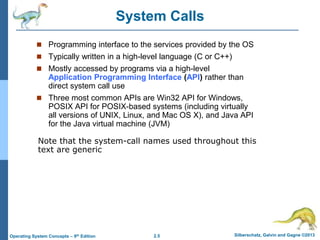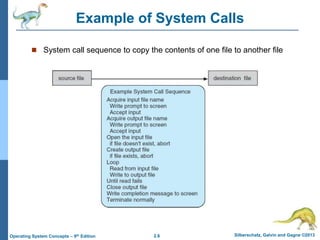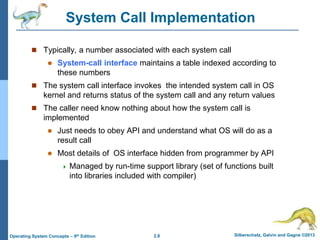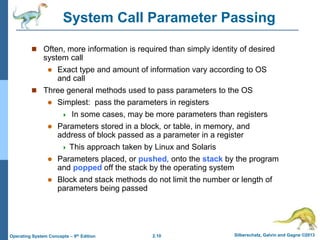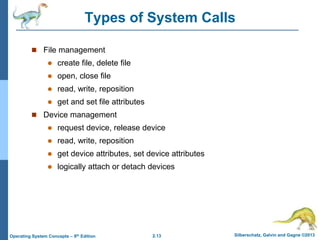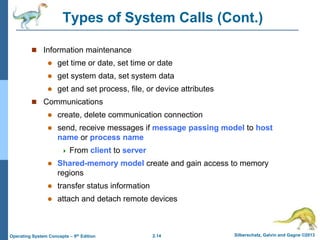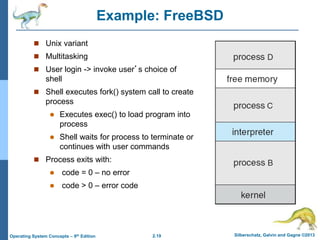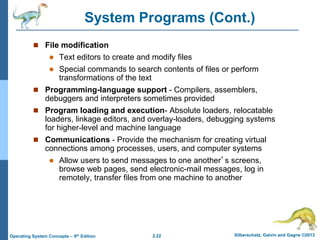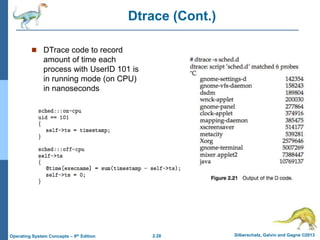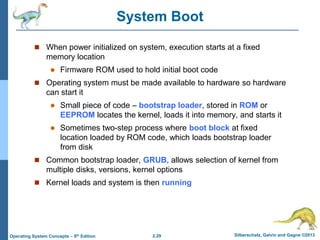This document discusses operating system concepts from the 9th edition of the textbook "Operating System Concepts" by Silberschatz, Galvin and Gagne. It covers topics such as system calls, types of system calls, system programs, operating system structures, debugging, and system boot. The key points are that system calls provide an interface for programs to request services from the operating system, there are different types of system calls for processes, files, devices etc., and system programs provide user interfaces and utilities for tasks like file management and programming support.
